Good afternoon friends! We are all used to the fact that our temperature rises when we have a cold or caught the flu. But suddenly we notice that we often have a high temperature without signs of a cold. Today I will tell you in what cases this happens and whether there is reason to worry.
Temperature without cold symptoms
The human body is unique! It independently regulates all the mechanisms of life and signals us about failures at the macro and micro levels. And often the first sign of such a failure is an increase in temperature. But not always the reason high temperature as is customary, becomes a cold.
The normal body temperature is 36.6 degrees, and this is the most optimal indicator of the work of the body and the processes occurring in it.
But exceptions to the rule always exist, so some people have a normal temperature of 36 degrees, and sometimes 37.4 - and this is also the norm. In addition, during the day there is a constant fluctuation of it: in the morning it is lower, in the evening it rises half a degree higher.
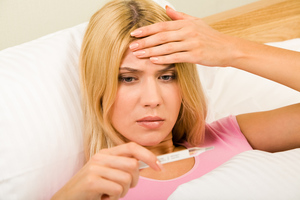
Rise in temperature - causes
In any case, an increase in temperature without any signs of a cold indicates that something bad, alien is happening in your body, and it is trying to fight it:
- Inflammatory processes that do not always occur due to a cold. For example, an intestinal infection can occur with an increase in body temperature.
- Poor quality food that caused poisoning.
- reaction to vaccinations. A pyrogenic reaction to vaccinations is considered normal and there is no reason to worry.
- Diseases of the thyroid gland. An increase in temperature without signs of a cold is one of the symptoms of thyroid diseases. Usually 37 - 38 degrees, not higher, but constantly. If you have other symptoms: weight loss, tearfulness, irritability, be sure to see a doctor.
- Physical effects, such as frostbite or burns, as well as a foreign body that has entered the body and caused an inflammatory process.
- Overheating in the sun or with excessively warm clothes, and also taking a hot bath. In this case, a violation of the thermoregulation system occurs. It often happens in newborns, since their system is not yet developed.
- In babies, the elevation can cause teething or abdominal pain.
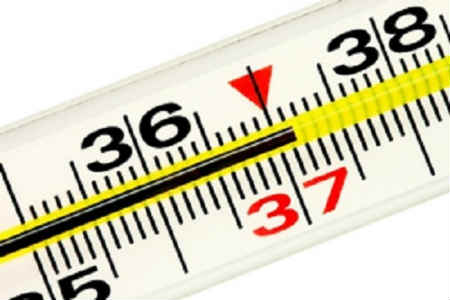
A few more reasons:
- Negative emotions. They can also be the cause. With any nervous tension, pressure surges are also observed, the temperature rises slightly, up to 37 degrees. It usually helps to take sedatives.
- Allergy. Many allergens, in addition to the usual symptoms, can also cause an increase in temperature.
- Medications. Occurs when taking low-quality drugs, or causing allergies.
- Menses. Often, in women during the period of ovulation, the temperature rises slightly, but with the onset of menstruation it normalizes, and this is considered the norm.
- Kidney disease. With inflammation, the temperature rises to 38 - 39 degrees, while you may have a pulling or dagger pain in the lumbar region, radiating to the groin or lower abdomen, perspiration or chills appear. For example at .
- Joint disease. It also often causes the appearance of a temperature without signs of a cold. For example, the one I wrote.
- Tumors, including malignant ones. The temperature keeps more than a month, for no apparent reason. As additional symptoms: weakness, hair loss, dramatic weight loss, all this may indicate a tumor of the kidneys, liver, lungs and leukemia.
- Sometimes elevated body temperature occurs when drinking alcoholic beverages, but this is more likely a manifestation of an allergic reaction.
- Increased physical activity, such as exercising, especially if you do it infrequently.
Friends, be attentive to the signals that your body gives you, with any increase in temperature without cold symptoms, consult a doctor. And be healthy, my dear!
It always causes bewilderment and anxiety. A normal indicator is considered to be a temperature that ranges from 35.5 to 37.2 degrees. Each organism is considered unique and reacts differently to a variety of conditions. But still it is worth understanding why the temperature becomes higher than normal.
Often, an increase in body temperature indicates that pathogenic microorganisms have entered the body. But the most difficult thing is to understand the reason for the state when the temperature rises just like that. In this case, the patient has to take an analysis not only of blood, but also of urine, sputum and bile.
Temperature without symptoms of a cold in adults is manifested in the following cases.
It is believed that a rise in temperature refers to favorable factors and indicates that the body is at war with a destructive effect. Therefore, until the temperature has exceeded the threshold of 38.5 degrees, it is not advised to bring it down.
If it grows, then it is necessary to use antipyretic agents. These include Paracetamol, Ibufen, Nurofen and Aspirin. Children under the age of twelve are recommended to give medicines in the form of syrup or suppositories. And taking aspirin is strictly contraindicated.
At temperatures above 41 degrees, irreversible type disorders occur in the brain. As a result, death may occur. But such a phenomenon happens in the rarest cases.
The reasons for the increase in temperature to 37 degrees
Normal colds characterized by fever, sore throat, runny nose and weakness. But does a body temperature of 37 degrees say very much without these signs?
The main reasons are considered to be the following.
- The onset of pregnancy in women.
- Weakened immune function.
- Infection of the body, which has a sluggish character.
- Condition before a cold.
- Depletion of the body.
- Fatigue and depression.
- Diseases of a venereal nature in the form of AIDS and syphilis.
![]()
The reasons for the increase in temperature to 38 degrees
A temperature indicator of 38 degrees is quite common. This may signal the onset of angina of the lacunar or follicular type. If this temperature lasts for more than three days, then this may indicate the presence of ailments.
- Rheumatism.
- Heart attack.
- Inflammatory process in the kidneys.
- Vegetative-vascular dystonia, which may be accompanied by a pressure surge.
- Pneumonia.
It also happens that the temperature of 38 degrees does not subside for several weeks. This may indicate that the patient has:
- development of a tumor-like formation;
- serious endocrine disorder;
- leukemia;
- change in the liver or lungs.

The reasons for the increase in temperature to 39 degrees
If a high temperature is observed without symptoms of a cold for the first time, then this indicates that the patient has a chronic disease and the immune system simply cannot cope. This condition may be accompanied by loss of consciousness, febrile convulsions, difficulty breathing and increased pressure. In such a situation, do not hesitate and urgently seek help from a doctor.
It is customary to refer to the main reasons.
- SARS.
- Tumor formation.
- The development of angina catarrhal type.
- allergic manifestation.
- Chronic pyelonephritis.
- hypothalamic syndrome.
- Viral endocarditis.
- Meningitis.
Causes of fever in children
Children are very susceptible to any environmental influences. Therefore, the temperature without signs of a cold in a child indicates the following.
- About overheating. In this situation, there is a violation of thermoregulation. This occurs when the child is heavily wrapped up, the room is very hot or a long stay in the sun. The temperature during overheating often rises to 38-39 degrees.
- About teething. This condition is characterized by:
constant scratching of the gums;
the age of the child is from five months to two years;
temperature that does not rise above 39 degrees;
inflamed gums;
decrease in temperature after teething;
refusal of food and increased salivation. - About stomatitis in acute form. The child loses his appetite and refuses to eat in every possible way. To all this, he begins to act up and sleep badly. When examining the oral cavity, small sores or vesicles can be found. In such a situation, it is urgent to consult a doctor. As a treatment, rinsing with furatsilin and a decoction of chamomile are prescribed. For some time, children should not be given spicy, hot and sour food.
- About acute otitis media. The disease is characterized by high fever without signs of a cold and pain in the ear. The child refuses to eat and cries all the time. At the same time, he can pull on a sore ear or cover it. A lot of sulfur can be released from the auricle.
- About sudden exanthema. This disease occurs in children between the ages of nine months and two years. It is characterized by an increase in body temperature up to 40 degrees, then there is an increase in the lymph nodes in the occipital, cervical and submandibular region. After two or three days, the temperature drops to 37 degrees, but a pinkish rash appears.
- About infections of the genitourinary system. Often, diseases of the kidneys and bladder are asymptomatic with an increase in body temperature up to 39 degrees. In the rarest cases, swelling of the facial region and lower extremities is observed. The child may become restless, go to the toilet frequently, and have difficulty urinating. The disease can be determined by urinalysis. If the inflammation is bacterial, the doctor will prescribe antibiotics.
- About the state after the delivered vaccination. Often, in children under two years of age, body temperature rises after vaccination. This is due to the introduction into the body of the corresponding viruses that cause the disease. If yes, then ibuprofen can be given. In some situations, doctors advise giving the baby immediately after vaccination paracetamol in combination with suprastin. To prevent the temperature from rising, it is advised to drink antihistamines two days before vaccination.
- About anxiety and stressful situations. Children react strongly to changes in the environment and quarrels of their parents. This condition manifests itself in an increase in temperature. It is enough to wash the baby with cool water and let him drink a soothing infusion of chamomile.
- About allergic manifestation. It is characterized by an increase in temperature to an indicator of 38.5 degrees. Allergies can occur to anything, including food, animal dander, pollen, and insect bites during the summer.
- About the onset of the flu or a cold. It often starts with a high fever. The body tries to fight off the viruses that have entered. But when the immune function fails, other symptoms appear in the form of fatigue, runny nose, weakness, coughing and tearing.
- Oh windmills. The first sign of the disease is precisely the rise in temperature to 39 degrees. Also, the child may be lethargic, drowsy and refuse food. After a few hours, a rash appears in the form of red spots. But you should not worry, as the disease is easily tolerated by young children. The main thing is to lubricate the formed bubbles with brilliant green or hydrogen peroxide.
The body can vary during the day within 35.5°C-37.4°C. At the same time, the place of its measurement is important, because the normal indicator of 36.5 ° C is usually determined in the armpit. When measuring the temperature in the mouth, the thermometer will show 37°C, and in the ear and rectum - up to 37.5°C. However, the growth of indicators to 38 ° C is always alarming. This reaction can be triggered by a variety of factors Negative influence on the human body.
Neurological causes
Often, an increase in body temperature without signs of a cold is due to vegetovascular dystonia. The slightest nervous tension and physical activity can cause a jump in blood pressure, the appearance of red spots on the face and chest. In this case, a slight increase in temperature is observed. Such a reaction of the body can be removed with sedatives (tincture of Eleutherococcus, valerian and motherwort).Overheating contributes to the development of hyperthermia
An increase in temperature in the absence of symptoms can occur with violations of the thermoregulation system, one of which is banal overheating. As a rule, such a reaction of the body occurs with prolonged exposure to the sun or in a room where it is very hot. Very often overheating is observed in newborns, therefore, when caring for them, it is necessary to observe a strict temperature regime.medicinal fever
There are times when, while taking any medicines body temperature rises. This condition does not proceed according to the allergic type. In this case, even after a thorough laboratory examination, it is not possible to find out the cause of hyperthermia. Only a carefully collected anamnesis will help clarify the situation, which will be reflected in the further tactics of the doctor.An increase in temperature in oncological pathology
As a rule, with such a diagnosis, an asymptomatic increase in temperature lasts for quite a long time. In this case, the patient notes general weakness, hair loss, loss of appetite and weight loss. In most cases subfebrile temperature(37.2°C–37.5°C) is observed in tumors of the kidneys, liver, lungs and leukemia.If the reason is not established
An increase in body temperature in the absence of clinical signs of a cold is always alarming. In any case, the reason for such a reaction becomes clear only after a visit to the doctor, who will examine the patient and prescribe the necessary examination. Until the diagnosis is clarified, it is not recommended to take antipyretic drugs. This will not only hinder the identification of the cause of the disease, but also aggravate its course.High body temperature is an unpleasant and incomprehensible phenomenon, since in the absence of symptoms it is rather difficult to determine its cause.
The optimal body temperature is considered to be 36.6 degrees, however, this figure can vary in one direction or another even for quite healthy person. This happens under the influence of stress, with a change in climatic conditions and other circumstances.
 In addition to external factors, there are also internal factors provocative increase temperature without symptoms of a cold. In some cases, other symptoms of a particular disease appear, which makes it easier to diagnose, but this may not happen. To confirm the diagnosis, it is necessary to undergo a laboratory test, which consists in passing urine, bile, blood, mucus and sputum tests.
In addition to external factors, there are also internal factors provocative increase temperature without symptoms of a cold. In some cases, other symptoms of a particular disease appear, which makes it easier to diagnose, but this may not happen. To confirm the diagnosis, it is necessary to undergo a laboratory test, which consists in passing urine, bile, blood, mucus and sputum tests.
Main reasons asymptomatic fever are the following:
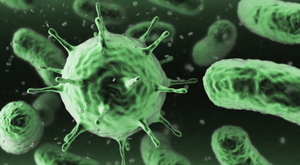
2. Tumors. The use of antipyretics in this case does not give any effect, since fever is associated with pathological changes in the tissues of the diseased organ.
3. Injuries. It can be inflamed wounds, fractures, bruises.
4. Porfiria.
5. Some pathologies of the endocrine system.
6. Blood diseases and hemolysis.
7. Heart attacks.
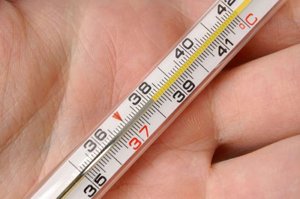
8. Chronic pyelonephritis. The temperature rises to 37.5-37.9 degrees and this may be the only sign of the disease. Since low-grade fever indicates the body's struggle with inflammatory processes, it is not worth knocking it down. If the fever persists for more than two weeks, you should contact the clinic and get tested.
9. Allergy, including medications. The temperature increase is insignificant, occurs abruptly.
10. Inflammation and systemic diseases, including autoimmune diseases - lupus, scleroderma, periarthritis nodosa, rheumatoid arthritis, allergic vasculitis, polyarthritis, Crohn's disease, polymyalgia rheumatica.
 11. Meningococcal infection. The temperature rises to 40 degrees and it is possible to bring it down only for a very short period of time. Characteristic signs do not appear immediately. In this situation, it is very important to see a doctor as soon as possible.
11. Meningococcal infection. The temperature rises to 40 degrees and it is possible to bring it down only for a very short period of time. Characteristic signs do not appear immediately. In this situation, it is very important to see a doctor as soon as possible.
12. Infective endocarditis. It develops against the background of a sore throat or flu. The temperature rises to 37.5-40 degrees. sick hospitalization required.
13. Violations of the functions of the hypothalamus (the center of the diencephalon that controls body temperature). The prerequisites for the occurrence, as well as methods of treating this pathology, are still unknown. To alleviate the patient's condition, the doctor prescribes sedatives.
14. Mental disorders. For example, febrile schizophrenia febrile.
 15. Malaria. Elevated temperature accompanied by headaches, coldness of the extremities, severe trembling, general agitation, delirium. At the same time, the high temperature periodically changes to normal, with a cycle of several days. Anyone who has visited African countries or has been in contact with an infected person can get malaria. In addition, the causative agent of the disease can enter the body through the drug addict's needle.
15. Malaria. Elevated temperature accompanied by headaches, coldness of the extremities, severe trembling, general agitation, delirium. At the same time, the high temperature periodically changes to normal, with a cycle of several days. Anyone who has visited African countries or has been in contact with an infected person can get malaria. In addition, the causative agent of the disease can enter the body through the drug addict's needle.
16. Endocarditis. This disease develops against the background of damage to the inner lining of the heart by pathogenic bacteria. Characteristic signs of pathology are pain in the heart, sweat with a smelly odor, symptoms of intoxication. Fever constant or hectic type.
17. Blood diseases: lymphomas, leukemias. In addition to fever, symptoms such as skin rash, weight loss, intoxication.
Non-hazardous increase in temperature indicators
There are other cases of asymptomatic fever in which this condition is not dangerous. These may be the following circumstances:
- If the temperature rises regularly, this may be a symptom of VVD (vegetovascular dystonia);
- too long exposure to the sun;
- puberty of adolescent boys.
Temperature 37 degrees without signs of a cold
 Fever without cold symptoms can occur in women with early menopause, pregnancy, breastfeeding. Changes in hormonal levels also affect body temperature. For example, in women during the normal menstrual cycle, there is a slight increase in temperature to 37-37.2 degrees.
Fever without cold symptoms can occur in women with early menopause, pregnancy, breastfeeding. Changes in hormonal levels also affect body temperature. For example, in women during the normal menstrual cycle, there is a slight increase in temperature to 37-37.2 degrees.
A temperature of 37 degrees cannot be called subfebrile, however, this condition often, in addition to a headache, delivers a lot of inconvenience. If such a fever quickly passes by itself, it does not pose a danger.
There are several reasons for this phenomenon:
- Chronic fatigue.
- Decreased hemoglobin levels in the blood or anemia.
- Stress, which is accompanied by the release of adrenaline into the blood.
- Depletion of human energy reserves.
- Weakened immunity.
- Post-stress or depression.
- The presence of a sluggish infection.
- General fatigue and loss of energy.
- Venereal diseases (AIDS, syphilis, etc.).
Usually, an increase in temperature to 37 degrees in an adult indicates the presence of a cause that provoked such a condition, and the inability of the body to cope with the problem on its own.
Asymptomatic fever up to 38 degrees: causes
 Temperature rise up to 38 degrees without signs of a cold occurs quite often. There are many explanations for this. For example, such a fever may be a symptom of a beginning follicular or lacunar angina (with catarrhal angina, only a slight increase in temperature is observed). If this temperature lasts for more than three days, the development of the following pathologies can be assumed:
Temperature rise up to 38 degrees without signs of a cold occurs quite often. There are many explanations for this. For example, such a fever may be a symptom of a beginning follicular or lacunar angina (with catarrhal angina, only a slight increase in temperature is observed). If this temperature lasts for more than three days, the development of the following pathologies can be assumed:
- Inflammation of the kidneys (characterized by unbearable stabbing pain in the lumbar region);
- pneumonia;
- heart attack;
- vegetovascular dystonia, which is accompanied by jumps in blood pressure (blood pressure);
- rheumatism.
The persistence of a feverish state for several weeks, and sometimes months, may be a sign of the following diseases:
- Leukemia;
- the development of tumor neoplasms in the body;
- diffuse changes in the lungs and liver;
- severe disorders of the endocrine system.
All these cases have in common that the immune system The body is fighting, which is the reason for the increase in temperature.
High temperature of 39 degrees without signs of a cold: causes
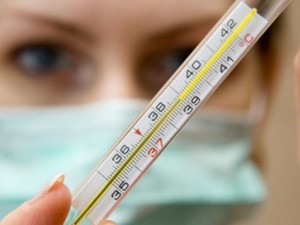 If the temperature rises to 39 degrees not for the first time, this may indicate the development of chronic inflammation or a pathological decrease in immunity. The process may be accompanied by febrile convulsions, shortness of breath, chills, loss of consciousness and a further increase in temperature. An increase in temperature to 39-39.5 degrees may be a sign of the following pathologies:
If the temperature rises to 39 degrees not for the first time, this may indicate the development of chronic inflammation or a pathological decrease in immunity. The process may be accompanied by febrile convulsions, shortness of breath, chills, loss of consciousness and a further increase in temperature. An increase in temperature to 39-39.5 degrees may be a sign of the following pathologies:
- Chronic pyelonephritis;
- SARS;
- allergy;
- viral endocarditis;
- meningococcal infection.
High fever without cold symptoms: hyperthermia or fever?
Thermoregulation of the body(regulation of body temperature) occurs at the level of reflexes and the hypothalamus, which belongs to the divisions of the diencephalon, is responsible for this process. The hypothalamus also controls the work of the entire endocrine and autonomic nervous system, because it is in it that the centers that regulate the feeling of thirst and hunger, body temperature, the cyclical sleep and wakefulness, as well as other psychosomatic and physiological processes occurring in the body are located.
Pyrogens (special protein substances) take part in the increase in body temperature. They are divided into the following:
- Primary, that is, external, presented in the form of toxins of microbes and bacteria;
- secondary, that is, internal, which are produced by the body itself.
When an inflammatory focus occurs, primary pyrogens begin to affect the cells of the body, forcing them to start producing secondary pyrogens, which, in turn, send impulses to the hypothalamus. And he already corrects the temperature homeostasis of the body in order to mobilize its protective properties.
Fever and chills will continue until the disturbed balance between increased heat generation and reduced heat loss is corrected.
With hyperthermia, there is also a temperature without signs of a cold. But in this case, the hypothalamus does not receive a signal to protect the body from infection, so it does not take part in raising the temperature.
Hyperthermia occurs against the background of changes in the heat transfer process, for example, as a result of a general overheating of the body (heat stroke) or a violation of the heat transfer process.
What to do with a high temperature without signs of a cold?
![]() In case of fever and headache, it is strictly forbidden to carry out physiotherapy, mud therapy, heating, massage, and water procedures.
In case of fever and headache, it is strictly forbidden to carry out physiotherapy, mud therapy, heating, massage, and water procedures.
Before treating fever accompanied by headache, it is necessary to find out true reason the problem that has arisen. This can only be done by a qualified specialist, based on laboratory data.
If it turns out that the disease is infectious and inflammatory in nature, a course of antibiotics is prescribed. And for example, in case of fungal infections, the doctor prescribes medications of the triazole group, polyene antibiotics and a number of others. medicines. Simply put, the type of medicine is determined by the etiology of the disease.
For the treatment of thyrotoxicosis or, for example, syphilis, some drugs are used, arthritis - others. Therefore, it is quite difficult to independently determine which drug you need, since fever is a symptom of many pathologies that are so different in nature.
Do not get carried away with antipyretics such as aspirin or paracetamol, as this can not only prevent the identification of the cause of the disease, but also aggravate its course. At a very high temperature, an ambulance team should be called to provide first aid and resolve the issue of hospitalization of the patient.
Temperature in a healthy person
An increase in body temperature without symptoms often remains invisible to the patient - and at the same time, even subfebrile fever (from 37.2 to 37.9 ° C) can be combined with weakness, affect working capacity, physical activity. Mild malaise is not always perceived as a symptom and is associated with stress, lack of sleep, changing daily routine.
In order to prevent overdiagnosis, that is, an erroneous judgment about the presence of a disease in a patient, the physiological causes of an increase in body temperature should be excluded. Prior to the start of the examination, it is necessary to collect a detailed anamnesis, which involves a survey regarding lifestyle, the presence of bad habits, the nature of the diet, the level of physical activity, and professional activities.
If at the stage of an oral consultation it is found out that a long-term elevated temperature without symptoms is associated with physiological processes, you will not have to use numerous laboratory and instrumental research methods and medications.
An elevated body temperature in a healthy person is observed:
- during operation in a heating microclimate;
- during the hot season;
- in case of non-compliance of clothing with ambient temperature.
- during physical activity;
- when used a large number food with high energy value;
- when eating hot foods and drinks;
- as a result of stress, fear;
- as a manifestation of daily fluctuations.
Women of reproductive age who are concerned about fever without symptoms should be evaluated for possible pregnancy.
If the temperature rises without symptoms in the second half of the menstrual cycle, physiological mechanisms should also be considered.
The heating microclimate is a combination of climatic parameters (ambient temperature, air velocity, etc.) that contributes to the accumulation of heat in the human body, which is manifested by profuse sweating and an increase in body temperature. To reduce the intensity of the adverse impact, breaks in work, the installation of air conditioners, and a reduction in the working day are necessary.
Relaxing on the beach in direct sunlight, being in a hot room are likely factors that cause an increase in body temperature. Closed clothing made of dense fabric that does not allow air and moisture to pass through makes it difficult to transfer heat - this leads to a temperature imbalance with excessive accumulation of heat in the body.
Physical activity includes sports or work activities and leads to an increase in body temperature without an objectively determined cause; with sufficient training, patients feel good, the temperature returns to normal after a short rest.
A heavy breakfast, lunch or dinner, especially if the food was hot, can affect body temperature: the values \u200b\u200bare shifted up to 0.5 ° C from the normal level. It is also known that the temperature changes when a person experiences strong emotions. An elevated temperature combined with a wave of heat or heat is observed for a short time after drinking alcohol.
Daily rhythms are evolutionarily fixed mechanisms that cause an increase in body temperature in the evening. The difference between the indicators at different times of the day can be from 0.5 to 1 °C.
In addition, it is important to clarify which method of thermometry the patient uses. Sometimes a temperature without a reason is the result of an incorrect assessment of the data obtained during the measurement. Rectal temperature is higher than axillary (determined in the armpit) and oral (measured in the oral cavity).
Determination errors can be associated with a thermometry device - mercury thermometers are considered the most accurate. Electronic and infrared thermometers are sensitive to the measurement technique, so you must strictly follow the instructions; the discrepancy between the actual body temperature and the recorded values can reach 0.5 ° C.
Temperature as a symptom
 Constitutional fever, or thermoneurosis, can cause an elevated body temperature without symptoms. Subfebrile fever is observed for several months and even longer, while the patient's state of health remains satisfactory.
Constitutional fever, or thermoneurosis, can cause an elevated body temperature without symptoms. Subfebrile fever is observed for several months and even longer, while the patient's state of health remains satisfactory.
If pathological manifestations are present, they are quite variable, the connection with fever can not always be traced. These include hyperhidrosis, a feeling of discomfort in the heart area, headaches, mood swings, sleep disturbance, a tendency to low or high blood pressure or a sharp fluctuation of its indicators for no apparent reason.
Temperature without other symptoms is a presumptive sign:
- Infectious-inflammatory process.
- Systemic connective tissue diseases.
- endocrine pathology.
- vascular thrombosis.
- Neoplasms.
Diseases belonging to the listed groups can begin with an increase in temperature with erased clinical picture including additional symptoms. In some cases, the patient's complaints and initial examination do not allow to determine any other changes, except for fever.
Infectious diseases are an extensive group of pathologies, many of which can occur in a latent (hidden) form - for example, tuberculosis of various localization, viral hepatitis B and C.
Sometimes high temperature becomes the main manifestation of infective endocarditis, foci of chronic infection (sinusitis, tonsillitis, carious teeth). Careful diagnostics is required to confirm or refute the infectious nature of the fever.
Systemic connective tissue diseases (systemic lupus erythematosus, dermatomyositis, etc.) are associated with immunological disorders and manifest as inflammatory lesions of the connective tissue. Temperature without cause in adults can be recorded for several weeks and even months before the onset of additional symptoms.
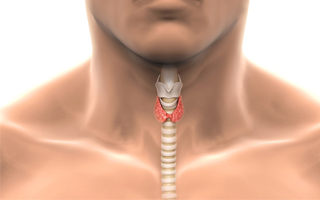 The complaint that an adult has a fever without symptoms sometimes characterizes the initial stage of hyperthyroidism. This is a syndrome of hyperfunction of the thyroid gland, manifested by an increase in the level of triiodothyronine and thyroxine and an increase in the intensity of basal metabolism. The development of pathology may be due to autoimmune mechanisms, the hereditary factor is also important.
The complaint that an adult has a fever without symptoms sometimes characterizes the initial stage of hyperthyroidism. This is a syndrome of hyperfunction of the thyroid gland, manifested by an increase in the level of triiodothyronine and thyroxine and an increase in the intensity of basal metabolism. The development of pathology may be due to autoimmune mechanisms, the hereditary factor is also important.
Temperature without symptoms in an adult with thrombosis is an important diagnostic sign; the elimination of fever with heparin therapy in the absence of the effect of antibacterial agents suggests the presence of vascular pathology.
Fever with tumors
In the case of neoplasms, the temperature without signs of a violation of the general condition is fixed at the beginning of the development of tumors of the bladder, kidneys, liver, hemoblastoses, multiple myeloma. It is believed that the cause of elevated body temperature is the production of pyrogens - biologically active substances that contribute to the appearance of fever (for example, interleukin-1).
The severity of fever does not always depend on the size and location of the tumor; fever without symptoms at the onset of the disease most often corresponds to subfebrile and febrile levels. After removal of the tumor, as well as with successful treatment with chemotherapy, normalization of temperature indicators is observed.
Fever is characteristic of tumors localized in the cavities of the heart (cardiac myxoma). Before the heart valves are involved in the pathological process, it is difficult to suspect the presence of a neoplasm.
Symptoms characteristic of the detailed clinical picture of myxoma:
- sudden increase in body temperature;
- weight loss;
- pain in muscles and joints without a specific localization;
- shortness of breath, dizziness, swelling;
- skin pigmentation.
Fever with myxoma of the heart is resistant to the use of antibacterial drugs. In the blood test, there are signs of anemia (a decrease in erythrocytes, hemoglobin), an increase in ESR, leukocytosis, thrombocytopenia, but in some cases erythrocytosis, thrombocytosis (increased levels of erythrocytes and platelets) are recorded.
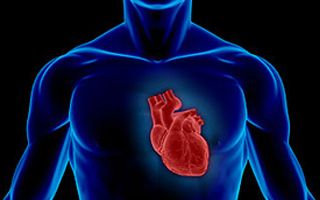 Infective endocarditis is one of the possible complications of the course of the pathological process in myxoma of the heart.
Infective endocarditis is one of the possible complications of the course of the pathological process in myxoma of the heart.
A temperature without other symptoms occurs in patients who are undergoing chemotherapy, radiation therapy and is called neutropenic fever. There is a sharp decrease in the number of neutrophils, followed by the addition of infection; in this case, the only manifestation of the infectious process is fever above 38 ° C.
It is necessary to carry out antibiotic therapy with monitoring of body temperature and evaluation of effectiveness within 3 days after the start of treatment.





